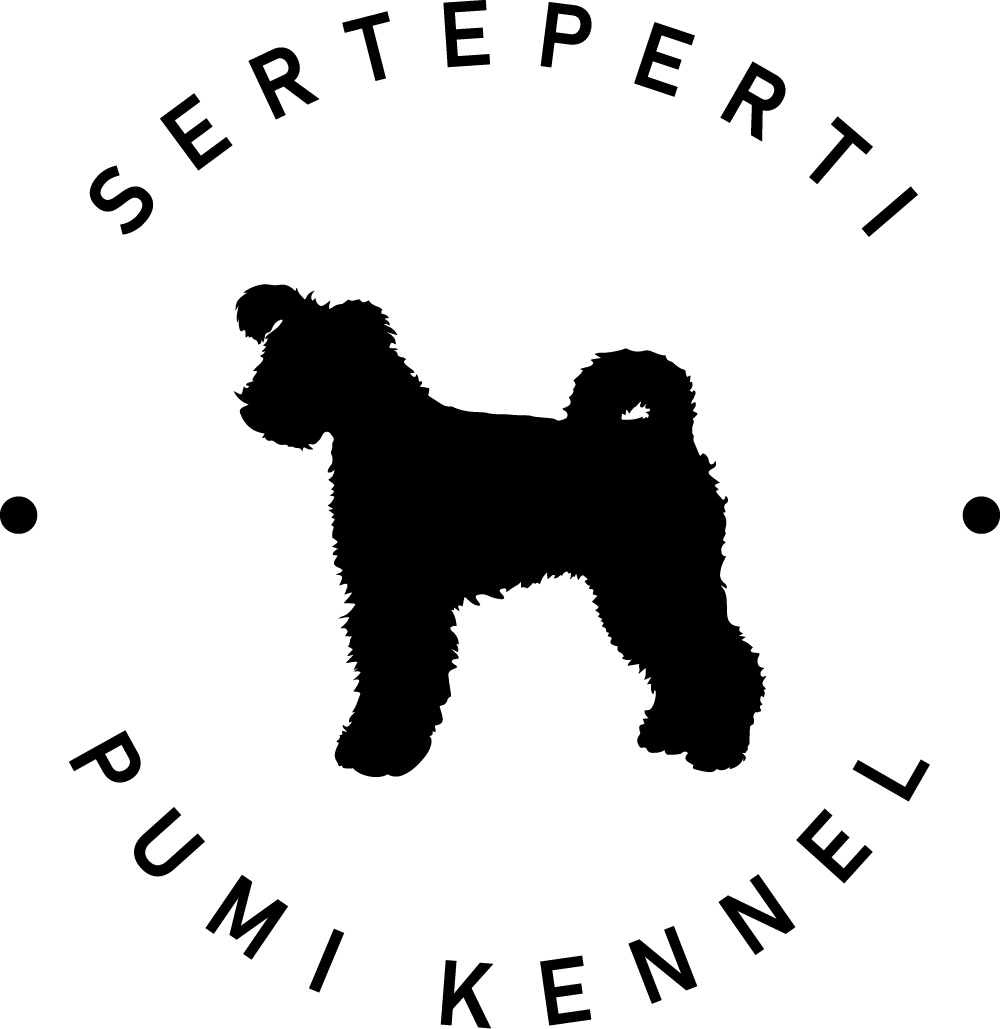The Pumi is exceptionally cute to look at, but it certainly is no lapdog. These are curious, smart, intense dogs that are extremely possessive, protective and watchful. They have a natural instinct to act as guard dogs and will use their voices liberally in the process. Pumis are reserved around strangers and unfamiliar animals, to the point of being suspicious. They are always on the go and ready to take action at a moment’s notice, especially when they are outside. Inside their own home, Pumis are affectionate, playful and devoted to their family members. They generally play well with children and other family pets, as long as they are properly socialized from an early age. These dogs are not well-suited for apartment life, as they need more open space to stretch their legs and burn off excess energy. The Pumi is not a dog for every family, especially those that are homebodies or who regularly work long hours away from the house. On the other hand, active people who are committed to doing lots of things with their dog every day, such as playing catch or fetch, taking long walks, jogging, biking, playing Frisbee or visiting the dog park, may find the Pumi to be a good choice.
Personality
Activity Level
Pumis are extremely active, spunky, high strung little dogs with a tremendous amount of endurance for their moderate size. Since they were bred for herding, these dogs are extremely athletic and love to run. The ideal living environment for a Pumi includes a loving home, with a medium-to-large securely-fenced yard, and regular daily outings with its owner for exercise, socialization and fresh air. This breed also thrives living on a farm or ranch, although it does not need that much space to stay happy and fit. Pumis enjoy obedience, herding, agility, flyball, freestyle, jogging and chasing balls. They also love taking long, leisurely walks with their owners and having play-dates with canine friends.
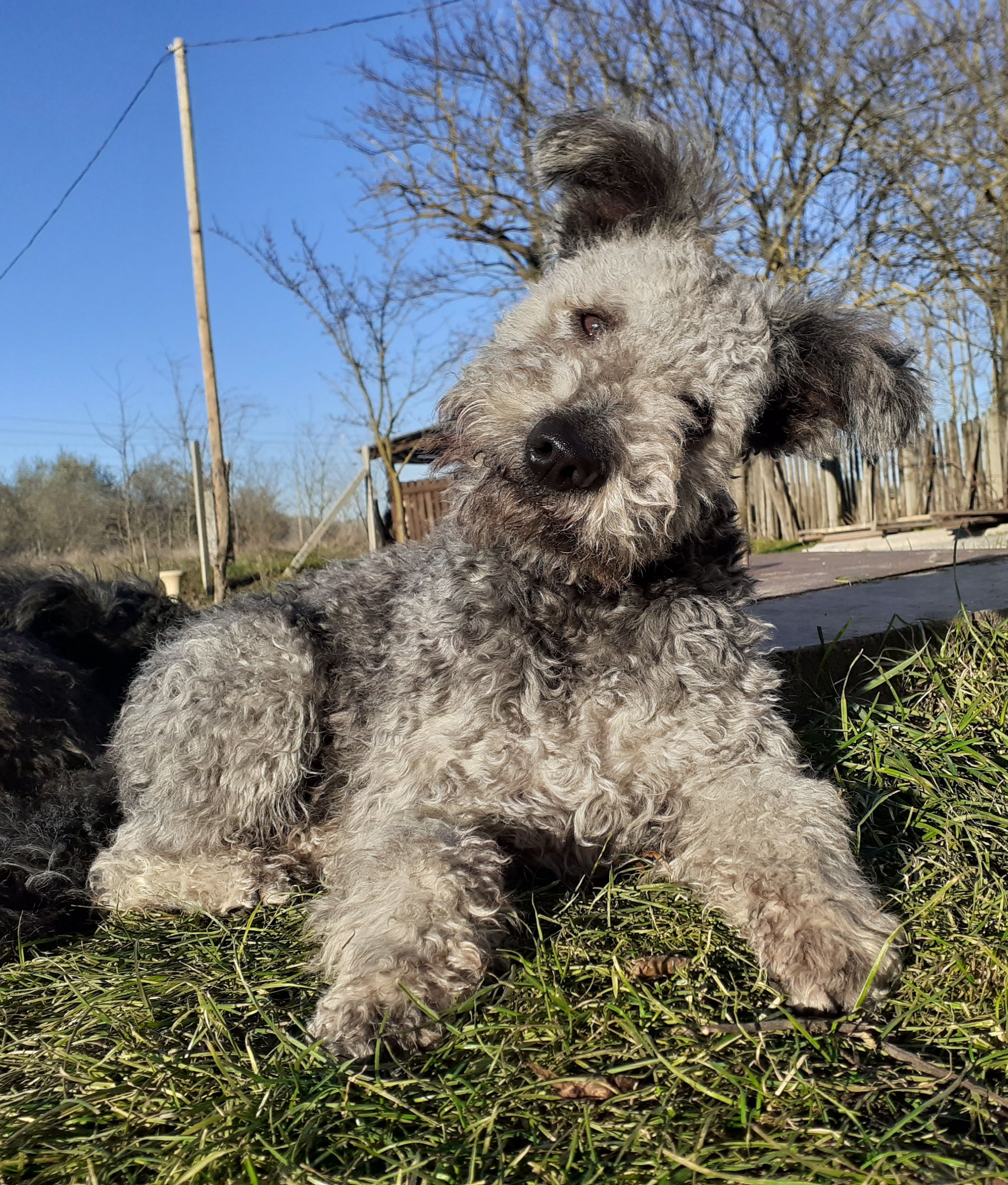
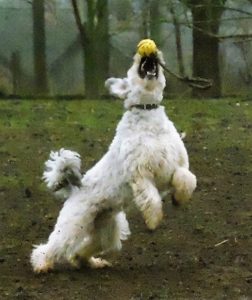
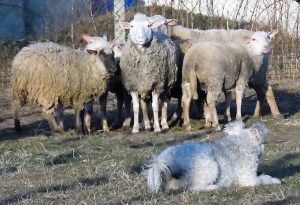
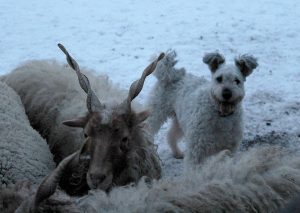
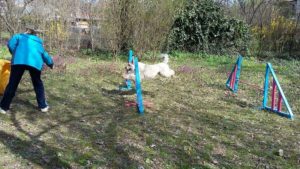
Trainability
This is an extremely bright, willing breed that is easy to train and fun to work with. Pumis respond best to motivational, reward-based training techniques, with lots of positive reinforcement and repetition. Many experts consider the Pumi to be one of the easier dogs to train since they are quick-learners and have a strong desire to please. It is important to start socializing Pumis at a young age, because they can become defensive and dominant around unfamiliar dogs and people.
Behavioral Traits
The Pumi has an excellent sense of smell and has been used quite successfully as a bomb-and-drug-sniffing dog, as well as in search-and-rescue operations. Pumis do tend to be noisy and usually bark when they hear any sudden sound. Because of this, they aren’t the best choice for households that live close to their neighbors. Pumis are extremely inquisitive and will investigate nearly every sound, sight or scent that they hear, see or smell. This trait makes them excellent watch and guard dogs. Due to its extremely protective and forward nature, a Pumi would probably spring to attack an unknown intruder that threatened its family or challenged it directly. While Pumis are generally good with children, but they are better suited for families with older children, adolescents or no kids at all. Toys are a huge hit with most Pumis, as they love to run and chase things, as well as play fetch and other games. They are nimble and are used in various agility competitions world-wide.
Standard
FCI Standard No. 56 Pumi CLASSIFICATION FCI: Group1 Sheepdogs and Cattle Dogs (exceptSwissCattleDogs). Section1. Sheepdogs. Without working trial. FCI Standard N° 56 / 13.09.2000 / GB TRANSLATION: Mrs C. Seidler and Mrs Elke Peper.
DATE OF PUBLICATION OF THE ORIGINAL VALID STANDARD: 06.04.2000
UTILISATION: Herding dog of Terrier type. Also suitable for herding larger types of animals. His scenting ability is well developed. Has excellently proved his worth when combating wild beasts of prey and rodents. Excellent house pet, can definitely be kept indoors. Needs plenty of exercise. Is an excellent companion and sporting dog.
ORIGIN: Hungary.
BRIEF HISTORICAL SUMMARY: The Pumi came into being during the 17th to the 18th century in Hungary by crossbreeding the Hungarian sheepdogs with imported German and French dogs of Terrier type with prick ears. It has been recognised as an independent breed at the beginning of the 20th century.
GENERAL APPEARANCE: The Pumi is a cheerful, medium sized herding dog of Terrier type. His Terrier character is most obvious in his head. The foreface is elongated and the upper third of the otherwise prick ears is bending forward. The conformation is square. Because of his constant alertness, his neck carriage is higher than normal. The wavy coat of medium length forms curls. The Pumi can have various colours but must always be of one solid color.
IMPORTANT PROPORTIONS The body length is equal to the height at the withers. The depth of the brisket is slightly less than half of the height at the withers. The length of the muzzle is slightly less than half of the total length of the head. The length of the neck is equal to the length of the head and is 45 % of the height at the withers.
BEHAVIOUR/TEMPERAMENT: This rather lively herding dog has a restless temperament. Extremely bold, a little suspicious towards strangers. As a result of his sensible behaviour, his liveliness and his expressiveness, he attracts attention always and everywhere. The Pumi is rather noisy. His whole appearance embodies thirst for action and because of his restlessness and activity, all parts of his body are constantly on the move. He is always active and ready for duty. A shy or phlegmatic behaviour are untypical of the breed.
HEAD: Relatively long and narrow. The shape of the head is characterised by the elongated muzzle.
CRANIAL REGION: Skull: The top of the head is relatively broad and domed. The long forehead is only slightly domed and flat seen from the side. The superciliary ridges are moderately developed. Stop: Barely perceptible, the forehead running an almost straight line between the eyebrows towards the bridge of the nose.
FACIAL REGION: Nose: Narrow, bluntly cut-off. Always black in all coat colors. Muzzle: The bridge of the nose is straight. The elongated facial region tapers towards the nose but is never pointed. Lips: Tight-fitting to the teeth, dark pigmented. Jaws/Teeth: Strong jaws. The strong, well developed teeth are white. Regular, complete scissor bite according to the dentition formula. Cheeks: Well muscled. Eyes: Set moderately wide apart, slightly oblique. Medium sized, oval, dark brown slit-eyes. The expression is lively and intelligent. The eye-lids are tight and close-fitting to the eyeballs and well pigmented. Ears: The upright ears are set on high, the upper third of the ears bending forward. The medium sized, even ears show a reverse V-shape. They show alert reactions to all stimulations.
NECK: Of medium length, little arched, well muscled, forming an angle of 50 to 55 degrees to the horizontal. The skin at the throat is tight, dry, without folds.
BODY: Well developed muscles, dry, exceptionally taut and tough. The breed is particularly lean and of harmonious appearance. Topline: Straight. Withers: Pronounced, long, sloping towards rear. Back: Short, straight and taut. Loins: Short, firmly coupled, straight. Croup: Short, slightly sloping, of medium breadth. Chest: The forechest is straight, not broad, rather deep. Ribs slightly arched, rather flat. The brisket is deep, long and reaches to the elbows. Belly: Tight, tucked up towards rear.
TAIL: The high set tail forms a wide circle above the croup. The hair on the underside of the tail is 7 to 12 cm long, wiry standing apart, with little undercoat. A natural stumpy tail or tail docking are not permitted.
LIMBS: FOREQUARTERS: The front legs, placed under the forechest, support the body like pillars. They are vertical, parallel and not too wide apart. Shoulders: The shoulder blade is long and a little steep. Angle to the horizontal is approximately 55°. The points of the shoulder blades are placed vertically above the deepest point of the brisket. Upper Arm: Short and well muscled. The shoulder blade and the upper arm form an angle of 100° to 110°. Elbows: Closefitting to the body. Forearm: Long, gaunt.Pastern: Steep. Forefeet: Rounded cat feet with well knit toes. The pads are springy. Nails strong, black or slate grey.
HINDQUARTERS: The hindlegs are very strong. Seen from the side, they are somewhat extended beyond the rear. Seen from behind, the legs are parallel, straight, standing neither too narrow nor too wide apart. Upper thigh: Muscular, long, sloping to the rear. Stifle: On the same level as the elbows. Lower thigh: Long, dry. Hock: The hock is lean with clean outlines. Metatarsus: Short, steep. Hind feet: Like forefeet. Dewclaws are not desired.
GAIT/MOVEMENT: Quite lively and spirited. Stride short, energetic, dynamic and hormonious. The posture is bold and proud. The trot is light-footed and harmonious; the dog puts his hind feet exactly into the foot prints of the forefeet.
SKIN: Without folds, strongly pigmented. The areas of bare skin are black or slate grey.
COAT: HAIR: The wavy, curly coat forms tufts and is never smooth or corded. The coat has an average length of 4 to 7 cm, growing to smaller or larger tufts; it is elastic, shaggy and dense. It consists of a strong, but not coarse, topcoat and a soft undercoat. The dense, wiry protective hairs of medium length on the ears grow upwards. The eyes and the foreface are free of long hair. The desired coat preparation is achieved by hand trimming. Smaller corrections, done with scissors on head and legs, are possible. Preparing the entire coat with scissors is not desirable.
COLOR: Grey in various shades (normally, the colour at birth is black, turning grey with time). Black. Fawn (fakó). Primary colours: red, yellow, cream (a trace of black or grey and a distinct mask are desirable). A white mark on the chest less than 3 cm in diameter and/or a white line on the toes are not faulty. White. The coat color must always be intense and solid.
SIZE AND WEIGHT: HEIGHT: Dogs: 41 to 47 cm; Ideal height: 43 to 45 cm. Bitches: 38 to 44 cm; Ideal height: 40 to 42 cm.
WEIGHT: Dogs: 10 to 15 kg; Ideal weight: 12 to 13 kg. Bitches: 8 to 13 kg; Ideal weight: 10 to 11 kg.
FAULTS: Any departure from the foregoing points should be considered a fault and the seriousness with which the fault should be regarded should be in exact proportions to its degree.
ELIMINATING FAULTS:
Round, Puli-like head. Foreface shorter than 40 % of the total length of head Strongly defined stop. One or more missing teeth (incisors, canines, premolars 2-4, molars 1-2). More than two missing PM1. The M3 are disregarded. Over- or undershot mouth, wry mouth. Completely upright prick ears. Ears pendant from base or carried unevenly. Short smooth coat. Long, very matted, sticking out or dull coat. Chocolate coloured, multicoloured coat. All uniform, clearly defined patches (i.e. tan markings, mantle forming marking). Size deviating from the height limits given by the standard. Note: Male animals must have two apparently normal testicles fully descended into the scrotum.
